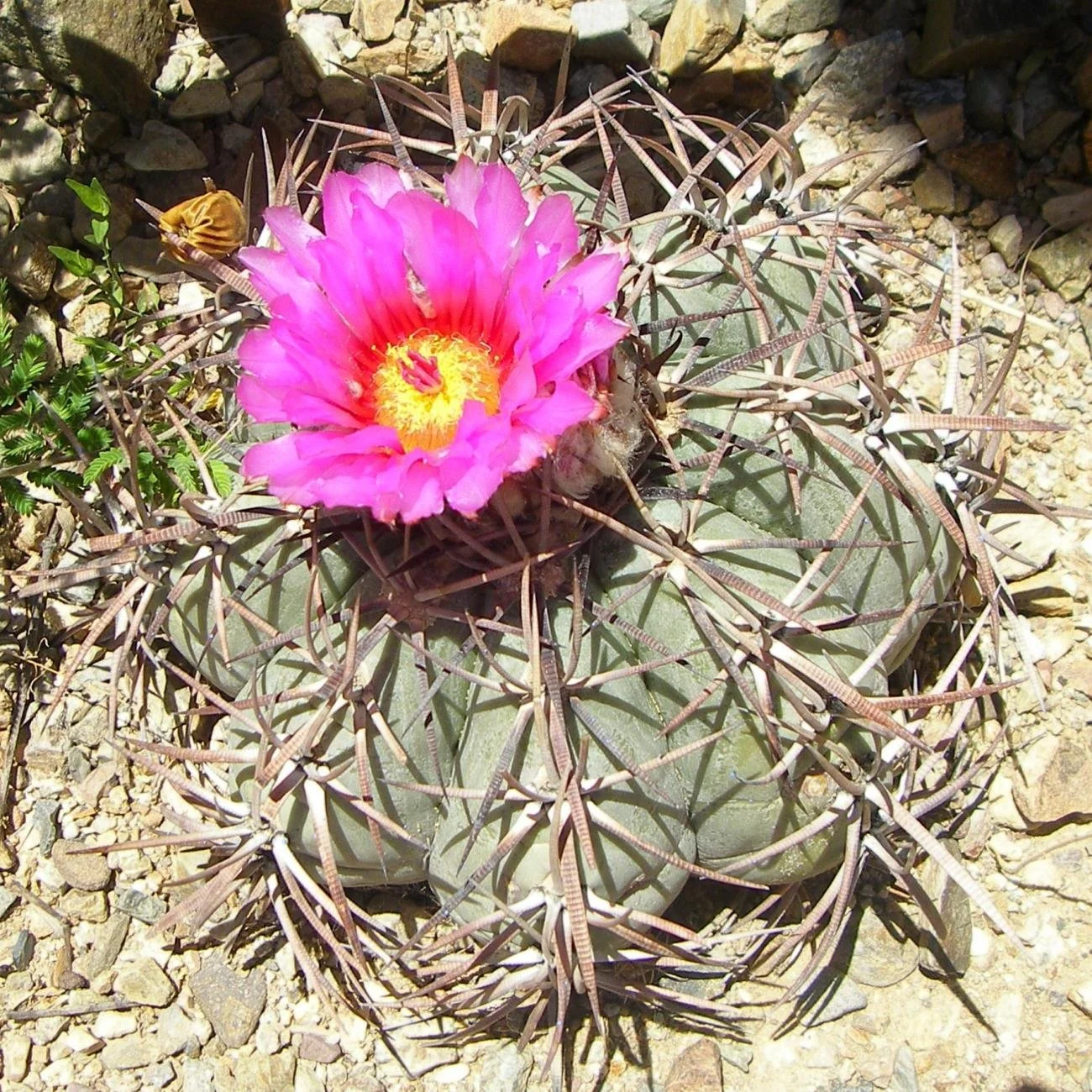Devilshead
Echinocactus horizonthalonius
This cactus is gray-green to blue-gray in color and spherical, hemispherical, columnar, or flat-topped in shape. It reaches a maximum size of about a foot and a half tall and not quite as wide. The body is made up of curving sections that twist around the body in a helical fashion. The bright pink to magenta flowers are up to about 3.5” wide and open around midday, usually closing up for the night. They also open after the plant receives rainfall, and although most of the flowers occur in June, they may bloom again in late summer and fall if rain occurs. The fruit that follows is hairy or woolly and pink or red in color.
The more common, Echinocactus horizonthalonius var. horizonthalonius, can be found in Chihuahuan Desert habitats, from Arizona, through New Mexico, into Texas and Northeastern Mexico. USDA: Echinocactus horizonthalonius var. horizonthalonius'.
The rare Echinocactus horizonthalonius var. nicholii, Nichol's turk's head cactus, is known only from three Sonoran Desert populations in southeastern Arizona, and one in Sonora, Mexico. It is federally listed as an endangered species of the United States. Some populations are protected within Ironwood Forest National Monument in Pinal and Pima counties in Arizona. Threats to the species include limestone mining, offroading, and collection of specimens for their showy flowers. Buffelgrass is also a major threat to the species, due to its introduction of fire to the landscape. There has been some success in conserving this variety, mainly by suppressing buffelgrass.
Photo by Anthony Mendoza, SEINET
Echinocactus horizonthalonius on iNaturalist
Grow in full sun to bright shade. Plants in filtered or morning sun look the best. Provide excellent drainage. Low water needed though watering plants that are in the ground 2-3 times a month in summer keeps them looking their best. Container plants water 1-2 times a week in summer. Water once or twice a month in winter in containers, and maybe once or twice the whole winter for plants in the ground. Hardy to about 15°F.
The genus name, Echinocactus, originates from the Greek words echinos, meaning "hedgehog," and kaktos, meaning "thistle." This genus is known for its rounded, ball-like shape that may elongate with age. The species, horizonthalonius, comes from the Greek horizōn + Greek halōnion, used by Lemaire for ‘areole’. For the horizontally oriented areoles. The subspecies was named for Andrew Alexander Nichol (April 27, 1895 – March 01, 1961) a botanist, botanical collector, and entomologist. There are 10 species of Echinocactus native to North and Central America, including regions such as the southwestern United States, Mexico, and parts of Central America. The various species of Echinocactus have adapted to thrive in a range of habitats such as desert, grasslands, and rocky slopes.
Found primarily on alluvial fans composed of limestone-derived soils in the Waterman and Vekol Mountains. Some plants can be found growing on bedrock terraces and saddles on the mountain.
The older plants really display the helix-pattern of the spines. This is the subspecies nicholli found in the Waterman Mountains. Photo by amart4984, iNaturalist
This is the more common subspecies horizonthalonius. Photo by melody_delreal, iNaturalist
The woolly fruit, photo by jjcelaya, iNaturalist




